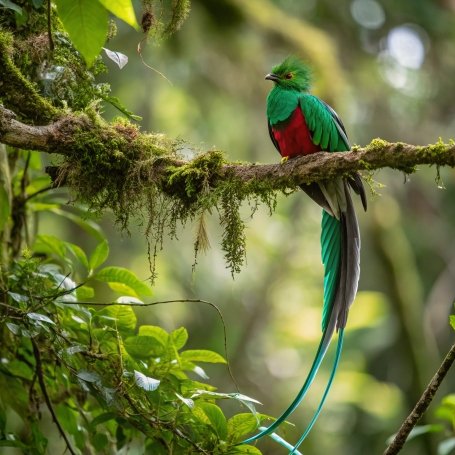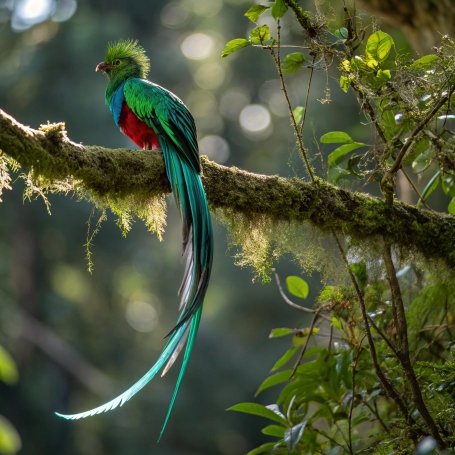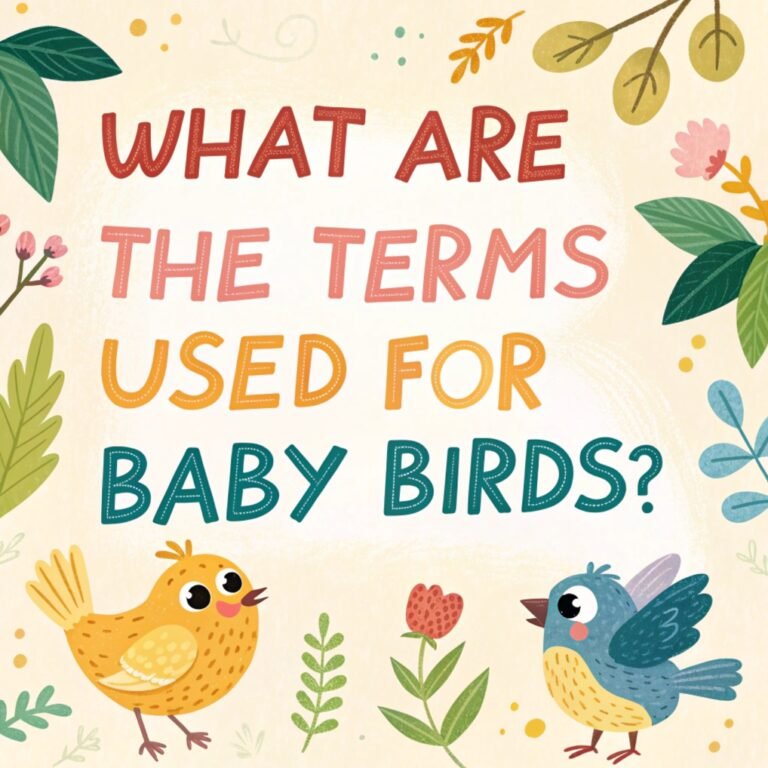The Resplendent Quetzal: Stunning and Iconic Central American Species
The Resplendent Quetzal (Pharomachrus mocinno) is a bird of extraordinary beauty and cultural significance, revered for its vibrant plumage and symbolic importance in Central America.
Found in the lush montane forests of southern Mexico to Panama, this bird captivates birdwatchers and conservationists alike.
Known for its shimmering green feathers and long tail, the quetzal is not just a visual marvel but also an ecological treasure.

Key Takeaways
- Unique Appearance: The male quetzal boasts iridescent green feathers, a bright red chest, and a long tail that exceeds its body length. Females are less vibrant but equally elegant.
- Habitat: These birds thrive in montane cloud forests across Central America, preferring dense canopies and ravines.
- Diet: Quetzals primarily feed on fruits, especially from the laurel family, but also consume insects, lizards, and small amphibians.
- Cultural Significance: The quetzal holds deep symbolic meaning in Mesoamerican cultures, representing freedom and divinity.
- Conservation Status: Listed as Near Threatened due to habitat loss from deforestation and agricultural expansion.
- Breeding Behavior: Monogamous breeders that nest in decaying trees, laying one to three pale blue eggs per clutch.
- Threats: Habitat destruction, poaching for feathers, and illegal pet trade are major challenges.
Dive into this detailed guide to uncover the secrets of one of the most magnificent birds on Earth.
What is the Resplendent Quetzal?
The Resplendent Quetzal (Pharomachrus mocinno) is a member of the trogon family and is renowned for its dazzling appearance.
Males are particularly striking with their iridescent green plumage, bright red chest, and elongated tail feathers that can grow up to three feet long.
Females are more subdued in coloration but share similar features such as large eyes adapted for dimly lit forests.
This bird is divided into two subspecies: P. m. mocinno, found in Mexico and Central America, and P. m. costaricensis, located in Costa Rica and western Panama.
Despite their stunning looks, quetzals are elusive creatures that blend seamlessly into their forest habitats.
Their overall size ranges from 14 to 16 inches long, with an additional tail length of about 24 inches in males. These birds weigh approximately 7 ounces and have thick feathers protecting their thin skin underneath.
The Natural Habitat of the Resplendent Quetzal

The resplendent quetzal inhabits montane cloud forests, thriving at elevations between 4,000 to 10,500 feet.
These forests are characterized by dense canopies, high humidity, and frequent mist. The bird prefers undisturbed areas with abundant fruiting trees.
Quetzals are altitudinal migrants; they descend to lower elevations during non-breeding seasons when food becomes scarce at higher altitudes.
These movements often align with the ripening of Lauraceae fruits, their primary food source.
Unfortunately, these habitats are under threat due to deforestation and agricultural expansion. Conservation efforts focus on preserving these unique ecosystems to ensure the survival of this iconic species.
Diet and Feeding Habits
The resplendent quetzal’s diet is predominantly frugivorous but also includes small animals. Key aspects of their feeding habits include:
- Primary Food: Fruits from the laurel family (Lauraceae) form the bulk of their diet.
- Supplementary Diet: Insects, lizards, frogs, snails, and other small creatures provide additional nutrients.
- Feeding Technique: Quetzals hover near branch tips to pluck fruits or catch prey mid-air.
This diverse diet plays a crucial role in forest ecology as quetzals help disperse seeds, contributing to forest regeneration.
They are known to feed on at least 41 to 43 different fruit species, with a particular preference for wild avocados and Symplococarpon purpusii.
Quetzals feed more frequently during midday hours. Interestingly, adult quetzals consume a more fruit-based diet, while chicks are fed primarily insects and some fruits.
Over fifty percent of the fruits they eat belong to the laurel family.
Breeding Behavior

Quetzals exhibit fascinating breeding behaviors that reflect their adaptability:
- Monogamy: They form monogamous pairs during the breeding season.
- Nest Construction: Both sexes carve out nests in decaying trees or reuse previous sites.
- Eggs and Incubation: Females lay 1–3 pale blue eggs per clutch. Both parents share incubation duties over 17–19 days.
- Chick Rearing: After hatching, chicks remain in the nest for about three weeks before fledging.
Breeding seasons vary by region but generally occur between March and June. In Mexico, the breeding season lasts from March to April, while in El Salvador, it’s from May to June, and in Guatemala, it spans from March to May.
Resplendent quetzals are territorial breeders, with each pair defending a territory of about 6–10 hectares (15–25 acres) in Guatemala. They typically lay two clutches per year but have a high nest failure rate of 67-78%.
Cultural Significance of the Resplendent Quetzal
The resplendent quetzal holds immense cultural importance in Mesoamerican civilizations:
- Symbol of Freedom: Ancient Mayans believed that quetzals could not survive in captivity, making them symbols of liberty.
- Divine Representation: The bird was associated with gods like Quetzalcoatl in Aztec mythology.
- Modern Emblem: Today, it serves as Guatemala’s national bird and appears on its currency.
These cultural ties highlight the quetzal’s enduring legacy as a symbol of beauty and freedom.
The bird’s vibrant feathers were highly prized by ancient Aztec and Maya civilizations, who regarded them as objects of power, beauty, and adornment.
Conservation Status
The resplendent quetzal is classified as Near Threatened by the IUCN due to several factors:
- Population Decline: Estimates suggest 20,000–49,999 individuals remain in fragmented habitats.
- Habitat Loss: Deforestation for agriculture and logging poses significant threats.
- Hunting and Trade: Poaching for feathers or illegal pet trade exacerbates population pressures.
Conservation efforts focus on protecting cloud forests through reserves like El Jaguar Reserve in Nicaragua.
This reserve not only serves as a habitat for quetzals but also provides critical winter habitat for migratory birds such as the Wood Thrush and Golden-winged Warbler.
Threats Facing the Resplendent Quetzal
Several challenges threaten the survival of this species:
- Deforestation: Logging activities destroy critical nesting sites.
- Agricultural Expansion: Conversion of forests into farmland reduces available habitats.
- Climate Change: Altered weather patterns impact food availability.
- Illegal Trade: Poaching for feathers or captivity disrupts populations.
Addressing these issues requires global collaboration between governments, NGOs, and local communities.
Conservation organizations are working to promote sustainable farming practices and bird-friendly crops like cacao to help preserve quetzal habitats.
Ecotourism and Its Role in Conservation
Ecotourism offers a sustainable way to protect quetzals while benefiting local economies:
- Birdwatching tours attract enthusiasts eager to see these elusive birds.
- Revenue generated supports conservation projects like habitat restoration.
- Educational programs raise awareness about environmental preservation.
Popular destinations include Monteverde Cloud Forest Reserve in Costa Rica and Sierra de las Minas Biosphere Reserve in Guatemala.
These protected areas not only provide safe havens for quetzals but also offer opportunities for nature enthusiasts to observe these magnificent birds in their natural habitat.
How Can You Help?
Individuals can contribute to quetzal conservation through simple actions:
- Support organizations working on habitat preservation.
- Choose eco-friendly travel options when visiting Central America.
- Avoid purchasing products made from animal parts like feathers.
- Spread awareness about the importance of cloud forest conservation.
Every small effort helps ensure future generations can marvel at this magnificent bird. By understanding and appreciating the resplendent quetzal, we can all play a part in safeguarding its future and the delicate ecosystems it calls home.
The Role of the Resplendent Quetzal in Ecosystem Dynamics
The Resplendent Quetzal plays a vital role in ecosystem dynamics, particularly in seed dispersal. As a frugivore, it consumes a variety of fruits, aiding in the propagation of numerous plant species.
This process is crucial for maintaining the biodiversity and health of cloud forests. By dispersing seeds over wide areas, quetzals help regenerate forested regions, ensuring the survival of both flora and fauna.
Their presence indicates a healthy ecosystem, as they require large territories with abundant fruiting trees.
Conservation of quetzals, therefore, directly supports the preservation of their habitats, highlighting the interconnectedness of species within these ecosystems.
Protecting the quetzal means safeguarding the intricate web of life that depends on these majestic birds.
The Resplendent Quetzal in Art and Literature
The Resplendent Quetzal has inspired countless works of art and literature throughout history. Its vibrant plumage and ethereal presence have made it a symbol of beauty and freedom in various cultures.
Artists and writers have captured its essence in paintings, sculptures, and stories, celebrating its significance in Mesoamerican mythology and beyond.
The quetzal’s image is often used to convey themes of liberty and transcendence, reflecting its cultural importance.
In modern times, it continues to inspire creative expression, serving as a muse for those who seek to capture the spirit of the natural world. The quetzal’s enduring legacy in art and literature underscores its role as a cultural icon.
The Future of the Resplendent Quetzal: Conservation Strategies
The future of the Resplendent Quetzal hinges on effective conservation strategies. Protecting its habitat is paramount, requiring collaboration between governments, NGOs, and local communities.
Initiatives such as establishing protected areas, promoting sustainable agriculture, and combating illegal trade are essential.
Education and awareness campaigns can also play a significant role in conservation efforts, encouraging people to value and protect these birds.
Ecotourism offers a sustainable way to support conservation while benefiting local economies.
By fostering a sense of stewardship and responsibility, we can ensure that future generations will continue to marvel at the beauty of the Resplendent Quetzal.
Frequently Asked Questions (FAQs)
What makes the resplendent quetzal unique?
Its iridescent plumage, long tail feathers (in males), and cultural significance set it apart from other birds. The quetzal’s role in seed dispersal also makes it ecologically important.
Where can I see a resplendent quetzal?
Popular spots include Monteverde Cloud Forest Reserve in Costa Rica or Sierra de las Minas Biosphere Reserve in Guatemala. These protected areas offer the best chances of spotting these elusive birds.
Why is the resplendent quetzal endangered?
Habitat loss due to deforestation and agricultural expansion are primary threats. Climate change and illegal hunting also contribute to their declining numbers.
What do resplendent quetzals eat?
Their diet mainly consists of fruits from laurel trees but also includes insects and small animals. They play a crucial role in seed dispersal, especially for avocado trees.
How long do resplendent quetzals live?
In the wild, they typically live up to 20 years under favorable conditions. However, habitat loss and other threats may reduce their lifespan in some areas.
By understanding these remarkable birds’ lives better—and taking action—we can help secure their place in our world for years to come!

Hello, I’m Emily Price, the founder of Birds Affection. As a passionate bird enthusiast and spiritual seeker, I’ve always been fascinated by the symbolic meanings and mystical connections between birds and our lives. On this website, I share my knowledge and insights on the spiritual significance of various bird species, exploring their roles as messengers, guides, and teachers. Through my writing, I aim to inspire and educate others on the profound wisdom and beauty that birds bring to our world. Join me on this journey as we delve into the enchanting realm of bird symbolism and discover the hidden meanings behind these magnificent creatures.







